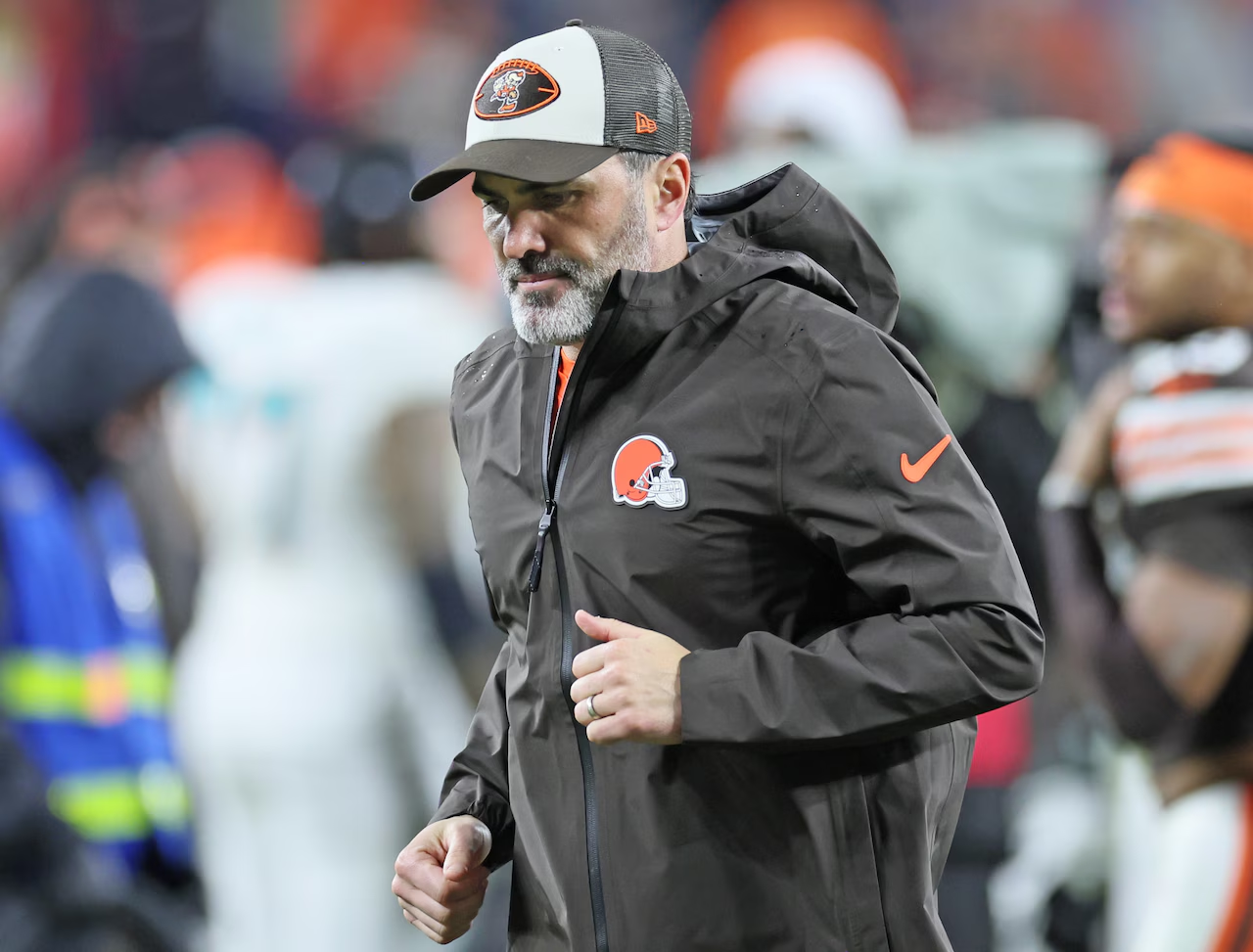CLEVELAND, Ohio — Browns head coach Kevin Stefanski spoke briefly—just 57 seconds—before stepping away from the cameras on Thursday morning. In that short time, he introduced new offensive coordinator Tommy Rees, explained the hiring process, and, almost as an afterthought, announced that he would be resuming play-calling duties.
/cdn.vox-cdn.com/uploads/chorus_image/image/68495479/1199499789.0.jpg)
Wait, what? Can we ask about that?
“No,” Stefanski replied, passing the microphone.
The day, however, wasn’t about Stefanski. It was about Rees, who, just last week, became the NFL’s youngest offensive coordinator. Once a Browns ball boy, Rees’s journey from the son of a football executive to Notre Dame quarterback and, now, fast-rising coach took center stage during the press conference. Rees shared insights into his coaching philosophies, but the announcement subtly shifted the spotlight back to Stefanski, making him the undeniable architect of Cleveland’s offense moving forward.
Strange as it may seem for a sixth-year head coach with two Coach of the Year awards, this marks the dawn of a new chapter: the Kevin Stefanski Era of Browns football. This era will be defined by his schemes, his play calls, and the assistants and quarterbacks he selects to carry them out.
From the start, Stefanski earned a reputation for aligning with Cleveland’s vision. When the Browns hired him, he inherited Baker Mayfield, a former first overall pick with three years remaining on his rookie deal and a loyal fanbase. Stefanski’s implicit task: maximize Mayfield’s potential or risk losing the job. Early results were promising.
In 2020, the Browns secured 11 wins and their first playoff victory in decades. Mayfield achieved a career-high QBR of 65.5, and Stefanski claimed his first Coach of the Year honor. The partnership flourished until an injury sidelined Mayfield, and tensions began to mount.
The Browns’ response? They moved on from Mayfield, trading him away and mortgaging significant draft capital to acquire then-Texans quarterback Deshaun Watson. Stefanski played a role in the controversial move, personally pitching the team’s vision to Watson. But Watson’s arrival drastically altered the Browns’ identity. Reports suggest Stefanski initially sold Watson on Cleveland’s existing scheme, yet the team soon pivoted away from its wide-zone, play-action system to a disjointed mix of RPOs and other unsteady concepts.
Twelve games into Watson’s tenure, Stefanski made further changes. He replaced offensive coordinator Alex Van Pelt—who had helped guide the Browns’ playoff success—with former Bills assistant Ken Dorsey. But the experiment unraveled, leaving Cleveland’s offense floundering as Watson struggled and the team’s identity dissolved.
So, did Stefanski genuinely want to overhaul his coaching staff and philosophy, or did circumstances force his hand?
Back to Thursday. This press conference was supposed to be about Tommy Rees, his vision, and his plans. Yet every decision Stefanski makes looms larger now, with Cleveland’s offense effectively a blank canvas under his command. Without a franchise quarterback or an experienced coordinator to lean on, the offense will reflect Stefanski’s philosophy more than ever before.
With that increased power comes greater responsibility—and scrutiny. In the NFL, accountability often goes hand-in-hand with job security. Stefanski has already tried molding his scheme around one quarterback and adapting it for another. Now, after parting ways with both Mayfield and potentially Watson, he’s rebuilding the Browns’ offense on his terms: his playbook, his staff, his vision.
The only question remaining: Who will Stefanski choose as his next quarterback?

